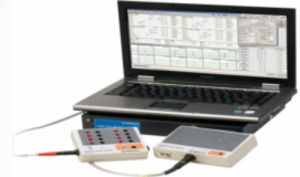Lead Researcher:
Prof Nasir A. Quraishi
Institution:
Queens Medical Centre Nottingham, UK
The Spinal Deformity Intraoperative Monitoring (SDIM) study is a multicentre international prospectively collected cohort study of patients undergoing high-risk spinal cord level surgery or spinal osteotomy procedures, to establish the incidence of intraoperative alerts in high-risk spinal cord cases, and explore factors associated with mitigating injury.
Baseline, intraoperative, and postoperative characteristics, including demographics, radiological features, lower extremity motor score (LEMS), procedure, anaesthetic agents used, and baseline blood pressure are recorded for either adult patients or paediatric patients.
If a major change occurs in the intraoperative neuromonitoring, defined as a loss of amplitude greater than 50% in the MEP or SSEP from baseline or sustained EMG activity, a separate documentation form is completed in real-time by the neuromonitoring technician outlining the timing of the alert, blood pressure at the time, surgical events at the time of the change, intraoperative manoeuvres performed to address the change, and resultant outcome. Figure 1 shows a typical neuromonitoring machine used in these surgeries.

Figure 1: An Intra-operative Neuromonitoring Machine (Medtronic, USA)
Once the patient is awake from anaesthesia, the treating surgeon performs a neurological examination to identify details about the deficit including sidedness, LEMS, sensory deficit, injury to the nerve root, incomplete spinal cord (ie anterior cord, posterior cord, central cord, Brown-Sequard), complete spinal cord injury, conus or cauda equina deficit. The examination is repeated on the day of discharge from hospital, or at day 30, whichever comes first and documented in the corresponding form.
The objective of this study is to identify the incidence of intraoperative alerts in high-risk spinal cord cases, correlate significant neuromonitoring changes to intraoperative events, and identify manoeuvres that will restore the neuromonitoring changes to baseline. The information provided by this study will educate spinal surgeons to recognise a spinal cord at risk and to perform intraoperative manoeuvres that will decrease the incidence of neurological injuries.
SDIM is now at closing phase and finalising the Statistical Analysis Plan (SAP). The preparation of the final study report will be started only after the SAP is confirmed. It will take another few months before any study outcome is made public (expected Q1 2023). In total, 21 sites enrolled 548 patients before the study closed on 31st March 2022.
